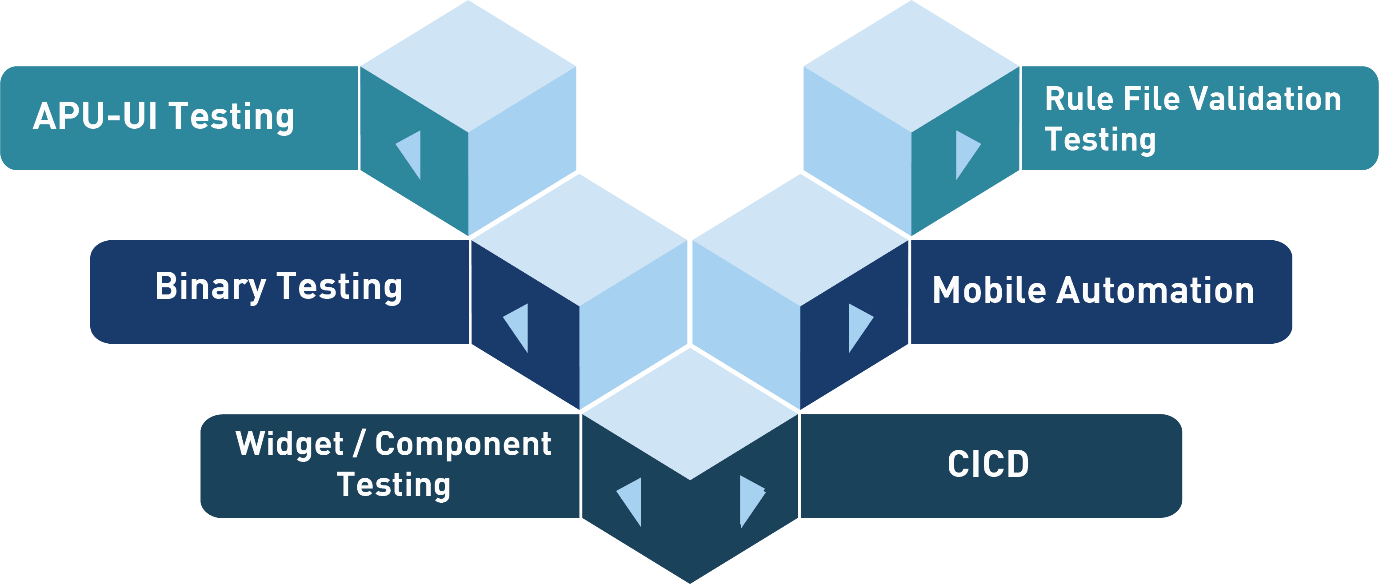Businesses today realize the edge digital transformation offers to fuel their growth rhythms and carve out its competitive edge – be it through faster-time-to-market, or by digitizing their strategic approaches. Statista has estimated the worldwide mobile users to reach 7.3 billion by 2023. In another study, Statista has indicated that online shoppers will grow more than 230 million by 2021. Now, imagine the pressure on the user experience levels which has to be seamless and flawless at any given point of time. This emphasizes the vitality of quality engineering processes, which has to be continuous for backing mobile application engines. Every testing strategy has to reflect continuous quality measure for providing continuous hassle-free experience. Towards this imperative, SDET’s (Software Development Engineer in Test or Software Design Engineer in Test) will play a significant role in releasing defect free software designs, development and more. But first – Let us understand the role of SDET’s SDET’s are ideal customer advocates who understand and influence product design by aligning end user expectations. Not an entirely new concept, (Microsoft introduced it a decade earlier) the need for SDET’s has risen considerably in the recent years. Simply put, SDET is the ‘jack-of-all-trades’ IT professional who takes part in the entire software development process – designing, development and testing. SDET’s scope of delivery as compared to functional or automation testers is geographically vast and immensely deep. They are masters in the below streams
- Build robust and high-quality test automation solutions
- Develop high performance code
- Assess product scalability, reliability and performance
- Participate in design and architectural decision making
- Perform high class debugging, and customizations
- Deploy environment /test automation framework
For succeeding in today’s application development scenario, SDET’s can on-board their top strategic skills which is seen in every customer engagement. These strategic skills are listed in the recently published Whitepaper. Let us look at the Top 6 testing zones of mobile application using SDET’s 
1. API-UI Testing:
API testing determines the expectation levels of functionality, reliability, performance, and security. This testing revolves around the list of API’s needed for that particular functionality from specification document provided by the business unit. This phase of testing includes functionality testing in three different aspects – minimal user inputs, faster response times and higher security on traversing customer-client data. Thus, facilitating a superior customer experience.
2. Rule file validation Testing:
Rule file validation is a process to compare JSON (Java Script Object Notation) formatted files, to look for missing tags or newly added tags in rule file using a JSON comparator. The functionalities in applications are turned on or off based on the flags set in rule files.
3. Binary Testing:
Post the development phase, the updated codes are pulled to generate two different binaries (application) – one for android and another for iOS. For emulator, which is for android, the binary is generated in ‘.apk’ format and for simulator (used for iOS) the binary is generated in ‘.app’ format. In this testing approach, focus is given to touch points, elements/field present in each screen on the binary.
4. Mobile automation
As the name suggests, mobile automation is done on mobile devices. By a process of automating testing of an application – which can be on a WAP site or an app, this approach brings in increased, efficient testing productivity and reduces testing cycle times. Test cases are first automated for android mobile application, iOS mobile applications and web applications. Thereafter, automation framework is used for improved execution control, parallel execution and report generation purposes.
5. Widget/Component Testing
Testing individual widgets /components in an app is to give an eye for detail to individual widgets / components paving way to singular unit test components. The focus is given to validate the individual widget/components for all its possible variations.
6. Continuous Integration and Continuous Delivery Testing (CICD)
Continuous Integration is about merging all codes from all developers into one central repo branch several times a day to avoid any future code conflicts. This process ensures that the main repo branch is maintained in the most current form of the source code. Continuous delivery picks up where continuous integration ends. With Continuous Deployment, every change made is automatically deployed to user acceptance testing. It automates the delivery of applications to selected infrastructure environments. The dual mix of CI/CD tools help store environment-specific parameters that must be packaged with each delivery. You can find more details on these five testing zones for SDET’s, in my whitepaper. Conclusion SDET’s are a single point of source for bringing inline automation for accelerating customer transformation journeys. The early quality engineering proficiency they facilitate is a key instrument for maintaining continuous quality. Several use cases beyond mobile applications such as websites, wearables and more, can be quality engineered thoroughly using SDET’s. Therefore, launching any future digital transformation initiatives can be a breeze with continuous quality engineered with speed at an unprecedented scale. Download a detailed whitepaper on “The role of SDETs in engineering quality for mobile applications.”































